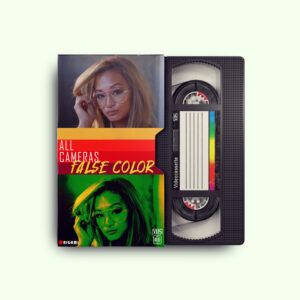Understanding HDR
Understanding HDR
HDR, or High Dynamic Range, revolutionizes visual content by capturing and displaying a wider range of colors and brightness levels compared to traditional SDR formats like REC709. This expanded range results in more lifelike and dynamic visuals, with richer colors, sharper contrast, and greater detail in both shadows and highlights.
HDR utilizes a larger color gamut such as REC2020, allowing for a broader spectrum of colors that appear more vibrant and true to life. Higher brightness levels, measured in nits, contribute to enhanced contrast and depth in images, making HDR content visually striking and immersive.
For creators, HDR opens up new creative avenues, enabling them to craft visuals with greater nuance, detail, and impact. HDR technologies like HDR10, Dolby Vision, and HLG are becoming standard across media platforms, ensuring consumers can enjoy HDR content across a range of devices for a more captivating viewing experience overall.
In essence, HDR represents a significant leap forward in visual technology, delivering more realistic and engaging content while empowering creators with tools to realize their artistic vision in unprecedented ways.
What you need to know
To fully appreciate and enjoy HDR content, there are a few key aspects you should be aware of:
-
HDR-Compatible Display: First and foremost, you’ll need an HDR-compatible display device. This could be an HDR-capable television, monitor, or projector. Ensure that your display supports HDR standards such as HDR10, Dolby Vision, or HLG, depending on the content you plan to watch.
-
Content Source: Accessing HDR content requires compatible sources. This could be streaming services like Netflix, Amazon Prime Video, or Disney+ that offer HDR programming. Alternatively, you can enjoy HDR content through Ultra HD Blu-ray discs or HDR-enabled gaming consoles.
-
Internet Bandwidth: Streaming HDR content typically requires a stable and high-speed internet connection. Ensure that your internet bandwidth can handle the data rates necessary for streaming in HDR quality without buffering or interruptions.
-
Settings Calibration: Properly calibrating your display settings is crucial for optimal HDR viewing. Adjust settings such as brightness, contrast, color temperature, and HDR-specific settings (like local dimming or dynamic range adjustments) to ensure accurate color representation and contrast levels.
-
Content Selection: Look for content specifically labeled as HDR or with HDR compatibility. HDR content is often marked with logos or indicators such as HDR10, Dolby Vision, or HLG, indicating the HDR standard used.
-
Viewing Environment: Consider the lighting conditions in your viewing environment. HDR content is designed to shine in darker rooms with controlled lighting, allowing you to fully appreciate the enhanced contrast and vibrant colors.
Let’s Not Forget the Creators
For creators looking to produce high-quality HDR content, several key elements are essential:
-
HDR-Capable Cameras: To capture content in HDR, creators need cameras capable of recording a wide dynamic range. These cameras should support HDR standards like HDR10, Dolby Vision, or HLG and offer high-resolution capabilities to ensure clarity and detail in the captured footage.
-
Color Grading Tools: Color grading software and tools are crucial for adjusting and enhancing colors, contrast, and brightness levels in HDR content. These tools allow creators to fine-tune the visuals to achieve the desired HDR effect, maintaining accuracy and realism in color reproduction.
-
HDR-Enabled Editing Software: Editing software that supports HDR workflows is essential for creators to work with HDR content seamlessly. This includes software with HDR monitoring capabilities, color grading tools specific to HDR, and the ability to export content in HDR-compatible formats.
-
HDR Display Monitoring: During the production process, it’s crucial for creators to monitor HDR content accurately. This requires HDR-capable monitors or reference displays that can accurately reproduce HDR colors, brightness levels, and contrast, ensuring that the final output meets HDR standards.
-
Knowledge of HDR Standards: Creators need a solid understanding of HDR standards such as HDR10, Dolby Vision, and HLG. This includes knowledge of color spaces, metadata, mastering techniques, and delivery specifications to create content that is compatible with various HDR platforms and devices.
-
HDR-Optimized Content Delivery: Once the content is produced, creators need to ensure it is delivered in HDR-compatible formats for distribution. This may involve encoding the content in HDR standards, embedding metadata, and selecting appropriate bitrates for streaming or physical media delivery.
-
Collaboration with HDR Professionals: Collaborating with HDR experts, colorists, and mastering engineers can greatly enhance the quality of HDR content. These professionals bring specialized knowledge and experience in HDR workflows, ensuring the final product meets industry standards and viewer expectations.
In the upcoming articles about HDR, I’ll delve deeper into the fascinating world of content creation, offering valuable tips and tricks for HDR enthusiasts. Make sure to stay tuned and check back regularly for more insightful articles and tutorials!




